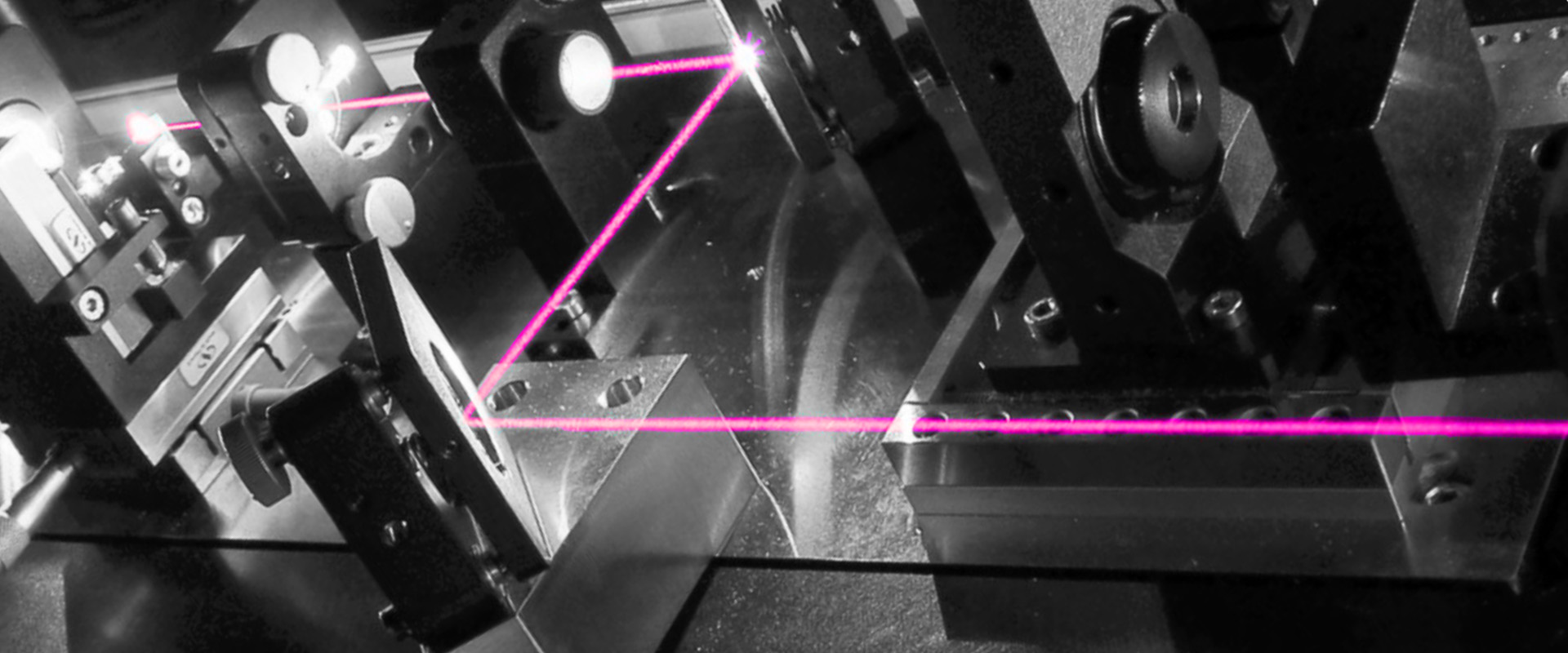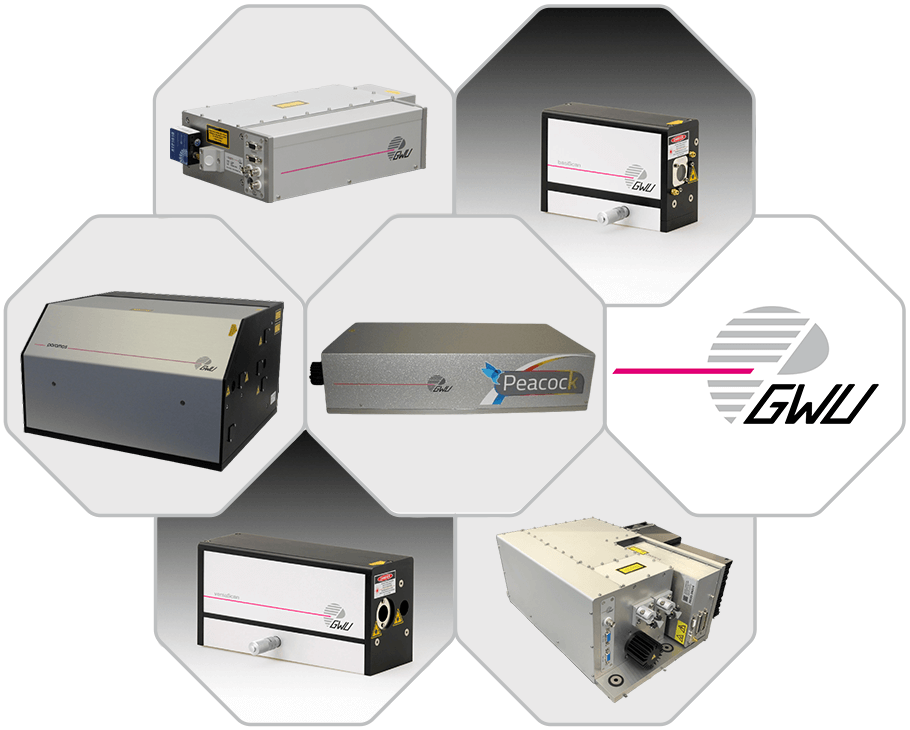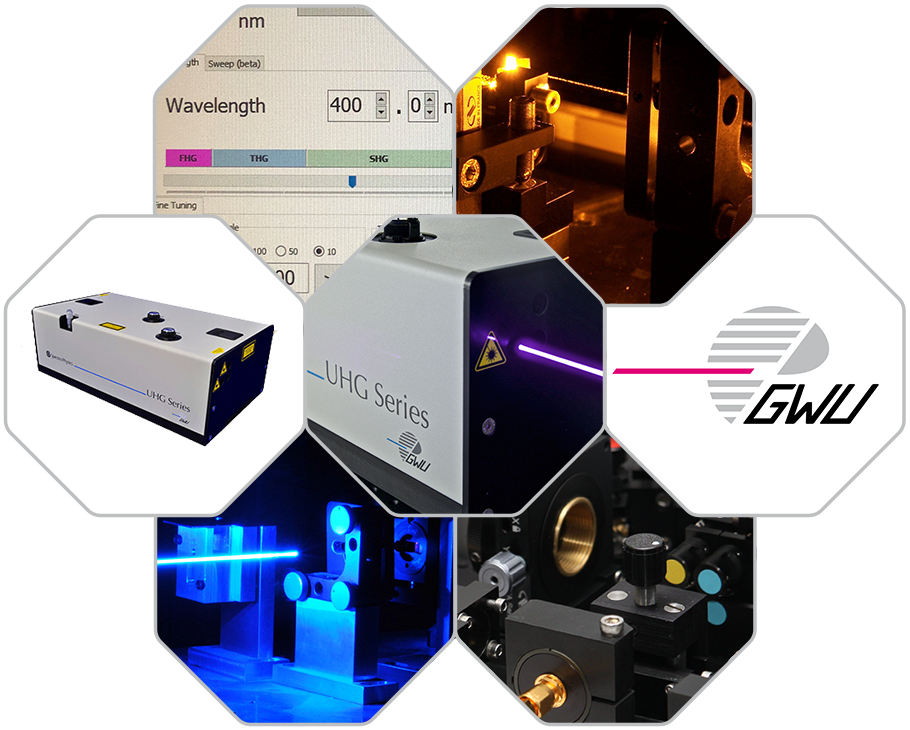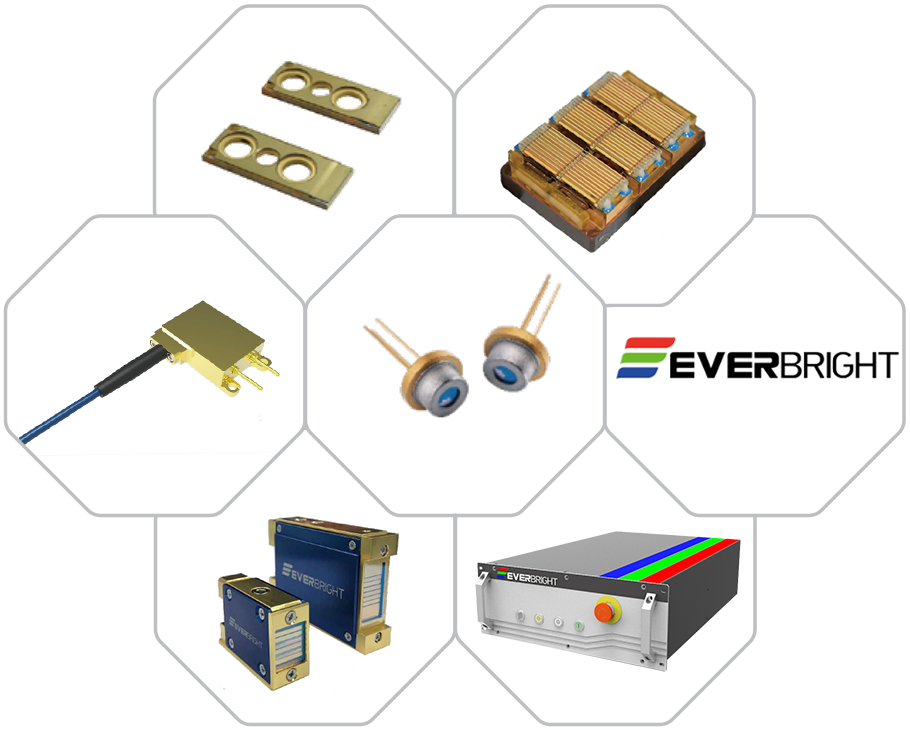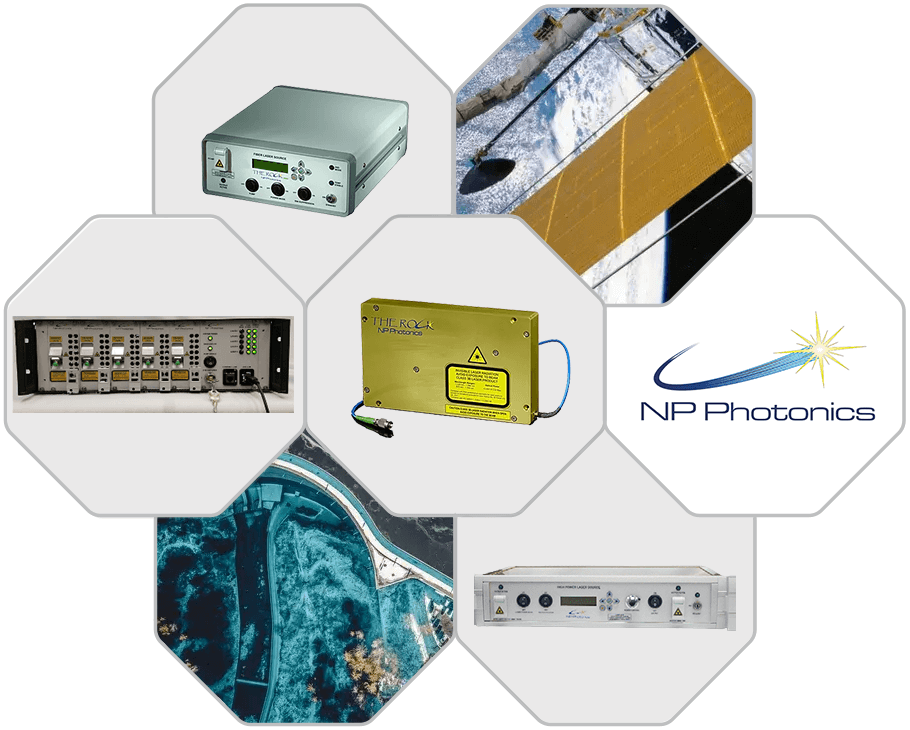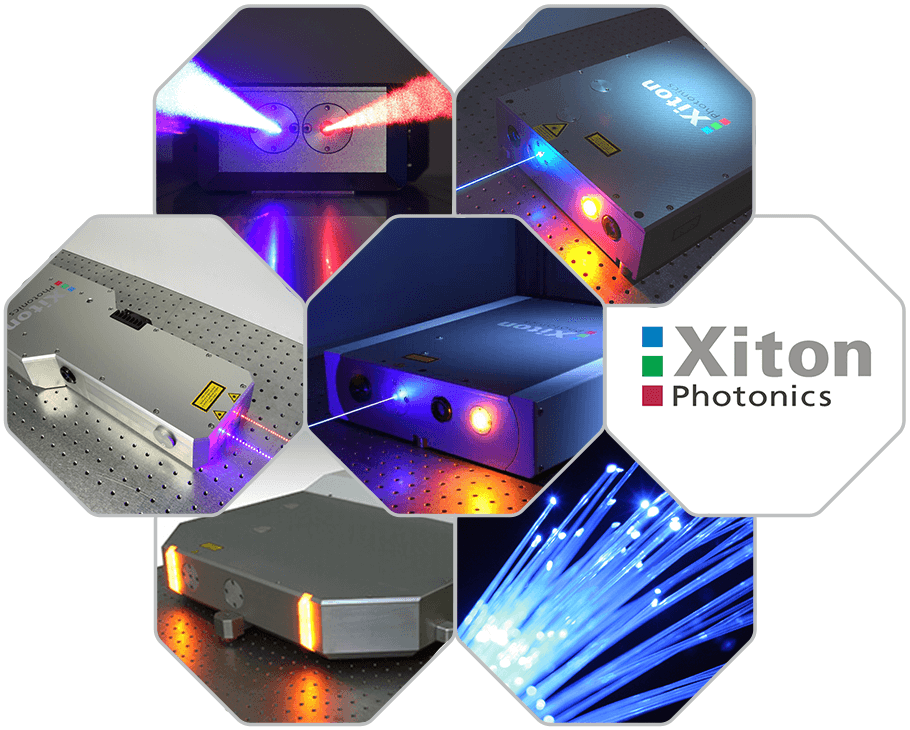The Experts in Tunable Laser Systems
GWU-Lasertechnik Vertriebsges. mbH has more than 30 years of experience in non-linear optics. After having started as distributor of non-linear optical crystals and laser accessories, GWU consequently began to build its own laser products based on these components.
GWU is the pioneer of commercial BBO OPOs. Our first tunable laser was introduced into the market in 1989. Today, our 5th generation of OPO devices are matured devices, providing tunable radiation from the deep UV to the mid-IR spectral range. With its rugged and reliable design our OPOs serves even most demanding applications in science and industry.
Besides the nanosecond product line, GWU uses its wide-ranging experience in the frequency conversion of ultrashort laser pulses. With our harmonic generator series for tunable femto- and picosecond lasers, the wavelength range of these devices can be extended to the visible and UV range. Our Pulse Picker adds additional flexibility to any ultrafast, high repetition rate laser, maintaining a compact footprint and a convenient usability. Using GWU’s ultrafast devices increases the versatility of almost any laser system, thus ensuring that it can be tailored to the particular application.
Fiber-based laser sources are known as reliable and worry-free devices. Single-mode linewidth, highest stability and low noise can serve even highest demands in high precision applications. GWU offers versatile fiber lasers: scalable in power, customizable in wavelengths and designed for reliable operation and industrial use. Tailored fiber lasers, fiber amplifiers, ASE sources and transport fibers will help to get the best out of your application.
Our portfolio is supplemented by DPSS lasers with wavelength extension. Particularly addressing (deep-) UV applications, these devices are tailored for 24/7 operation in the production line. Available with single mode linewidth, especially metrology, interferometry and lithography will gain an enormous advantage.

